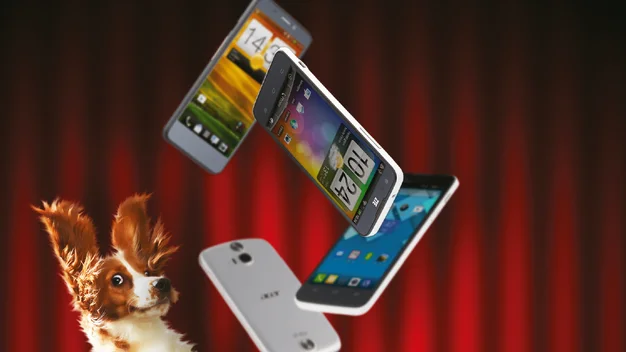10 great uses for an old smartphone

Teach your old phone new tricks! We show you 10 great ways to bring an unused handset back to life
3. Pass it on to your kids
Kids rarely need the latest features in a smartphone or tablet. If you don’t believe us, just look how happy younger users are to get their hands on a bespoke kid-friendly tablet like the LeapFrog LeapPad. So, a slightly outdated iPhone or Android device is perfect – and, since you already own it, infinitely cheaper.
Be sure to install the latest updates before handing it over, set up iPhones to back up over Wi-Fi to iCloud and Android devices to a Google Account to minimise the chance they’ll lose anything important, and enable any available restrictions so they don’t stray beyond set limits.
To set up parental controls on an iPhone or iPad, open Settings and tap General, then Restrictions. Tap Enable Restrictions and enter a four-digit passcode that will prevent them from disabling your defined limits. This unlocks a series of sliders beside the default applications – Safari, Camera, FaceTime and so on – that let you turn off each one in turn. You can also disable options like installing apps and making in-app purchases.
Once you’ve tailored what they can do, do the same for what they can see, hear or read. Scroll down to the bottom of the panel and make sure United Kingdom is specified in the Ratings For section, then use the standard media ratings to limit what the device will play. UK film options match those defined by the BBFC – U, PG, 12, 15 and 18 – with an option to disable films altogether. You can restrict explicit music and podcasts, books with sexual content and apps with specified age ratings. You can even limit playback volume to protect their ears.
To set up online backup, open Settings and tap iCloud, followed by Storage & Backup. Make sure the slider beside iCloud Backup is set to on (when it will be green).
On Android, set up online backup by opening settings and tapping Backup & Reset, then check the box beside ‘Back up my data’ and select a Google Account to use as the backup destination. This will store a copy of the phone’s wifi passwords, bookmarks, other settings and app data.
Things aren’t so simple on the parental controls front, though, since these were largely absent from Android until Google introduced individual user accounts for tablets with Android 4.2, which would allow you to set up a restricted account for younger users, and Restricted Profiles – again for tablets – in Android 4.3.
The best option for a smartphone, then, is to install third-party controls in the form of an app like Kids Place, which locks the phone and replaces the standard Android launcher with one you can tailor, as well as adding time limits and the option to block incoming calls.
Finally, if you plan on allowing your kids to make calls and send texts using the phone – whether Android or iOS based – check out Bemilo, which claims to be ‘the safest mobile network in the UK’, and allows you to manage who they can contact and when they can access the network, as well as giving you access to their messages.

4. Use it as a backup phone
We all have accidents, but water damage or a cracked screen needn’t take you offline if you’ve kept hold of your old phone and kept diligent backups of everything you’ve done since.
Once you’ve recharged and switched it on, connect it to your PC or Mac, start iTunes and right-click the iPhone in the sidebar. Select Restore from Backup… and choose the backup you want to use from the drop-down menu that appears on the restore dialogue. Each backup contains a record of your contacts, calendars, notes, text messages and settings, with a line below the menu showing you when it was created.
If your original reason for upgrading your iPhone was that your home button had started to become unresponsive – a fairly well-known complaint in some older models – avoid the frustration of trying multiple clicks at different angles to get it working by enabling the floating home button, which replicates the hardware switch with an on-screen equivalent that you can position wherever you need to keep it out of the way of your apps. Turn it on by opening Settings, followed by General, then Accessibility. Here, switch on AssistiveTouch and the button will appear.
On Android, make sure all of your data is being synchronised to your Google Account and it will be automatically restored to your old phone when you restart it. Open Settings, scroll down to Accounts and tap your Google account. If you have multiple accounts registered on the device, tap the one you want to use for backups and make sure each of the data types is ticked – including Calendar, Drive, Contacts and so on – to synchronise it to the server.
If you’re storing an unused phone for a long time, it’s worth periodically switching it on to run the battery right down and then charging it up again to condition it and help prolong its usable life.
